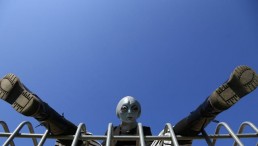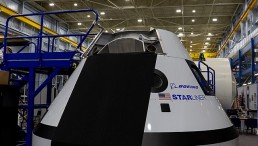ESA
Travel to Mars Focus of Toronto Conference
Cause of Galactic Death: Strangulation
Crew Change Delayed on the International Space Station
From the Surface of Jupiter's Moon—Europa Reveals Icy Glass
Man's Next Endeavor In Space-Keeping Mankind Alive on Mars
NASA Video Shows Giant Solar Filament Exploding from the Sun
Scientists Catch Light Bouncing Off Exoplanet
Scientists Believe That Venus Holds the Secret of How Life Developed on Earth
Sun Experiences Seasons Just Like the Earth
Can Science and Culture Coexist on Mauna Kea? Dozen ‘Protector’ Protestors Arrested This Week for Obstruction
New GPS Study Reveals Giant Pandas Hang in Packs in the Wild
Antarctica's Ice Shelves Melting Faster Than Originally Thought
Frozen In Space—How Comet 67P Is Slowing Down
Rosetta Spots Clues About the Formation of the Solar System
Most Popular

Mastering Lost Wax Casting: A Comprehensive Guide to Precision Prototype Creation

Alexander the Great's Bathroom From 2,300 Years Ago Where Young Ruler Could Have Bathed With Companion Discovered by Archaeologists in Royal City of Aigai

Meet Goldene: The Free-Standing Sheet of Gold Only One Atom Thick

Prey Playing Dead? Dice Snake Fakes Death Using Bloody, Gory Tactics To Avoid Getting Eaten by Predators, Study Reveals

![Venus Lost Water and Dried Out Due to Chemical Reaction HCO+ Dissociative Recombination [Study]](https://1721181113.rsc.cdn77.org/data/thumbs/full/53493/258/146/50/40/venus-lost-water-and-dried-out-due-to-chemical-reaction-hco-dissociative-recombination-study.jpeg)



